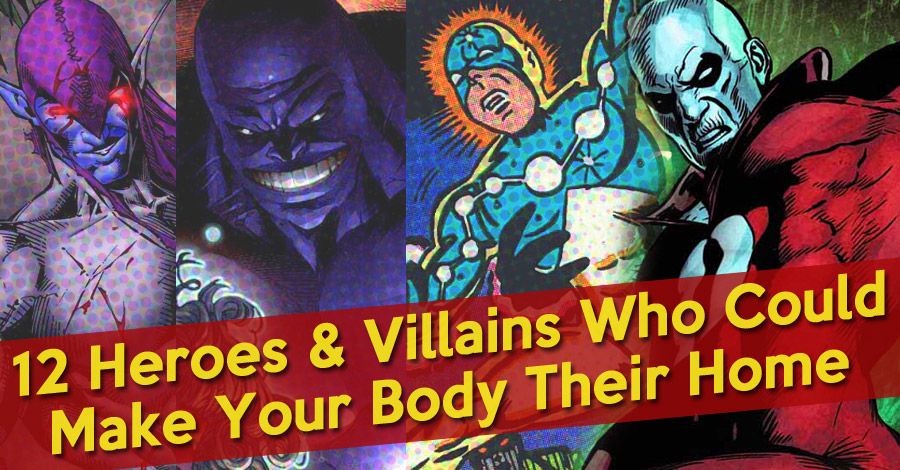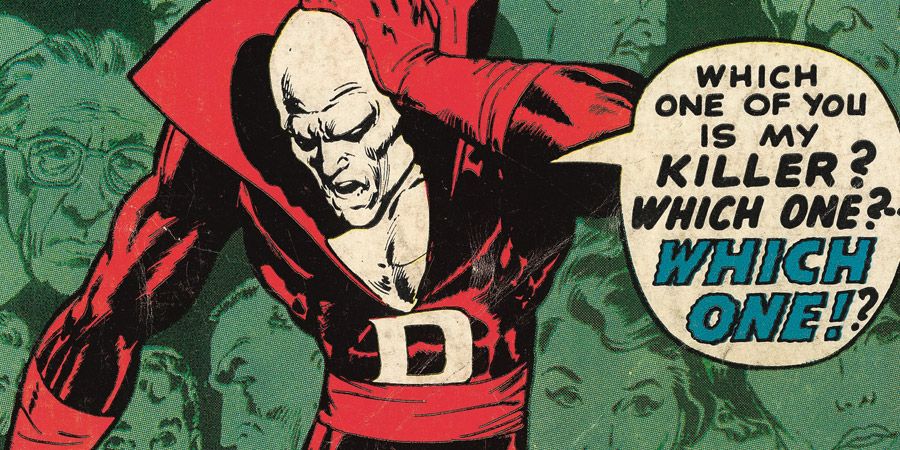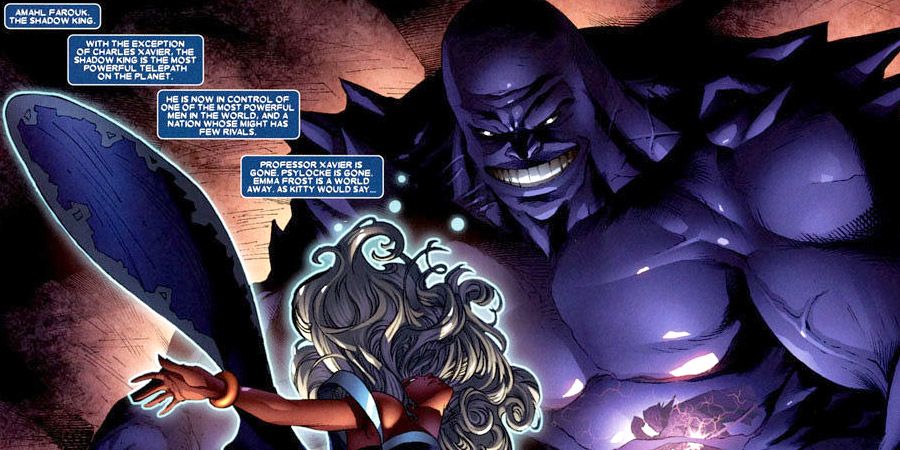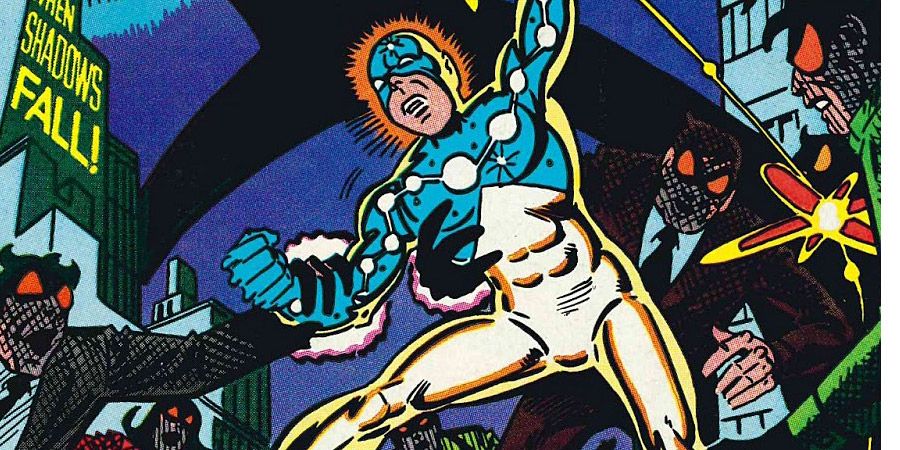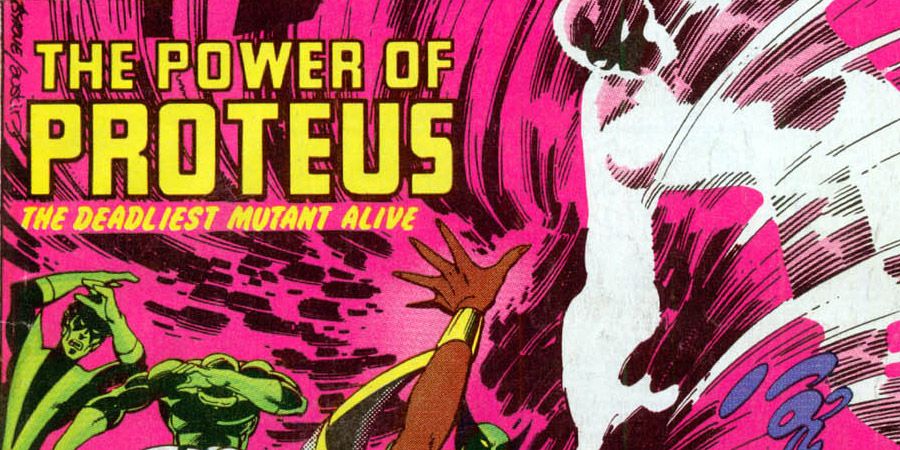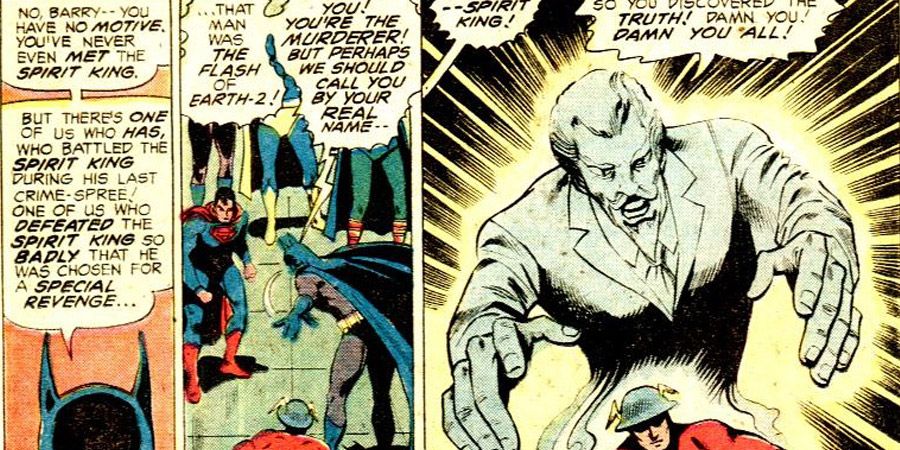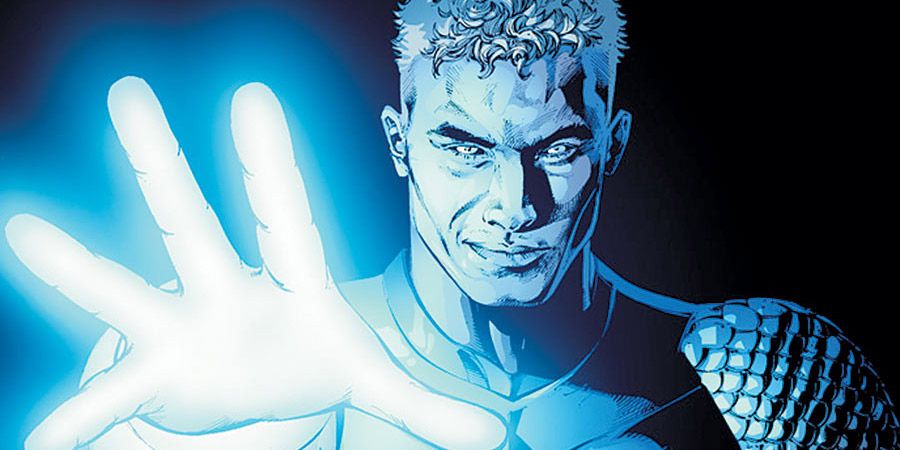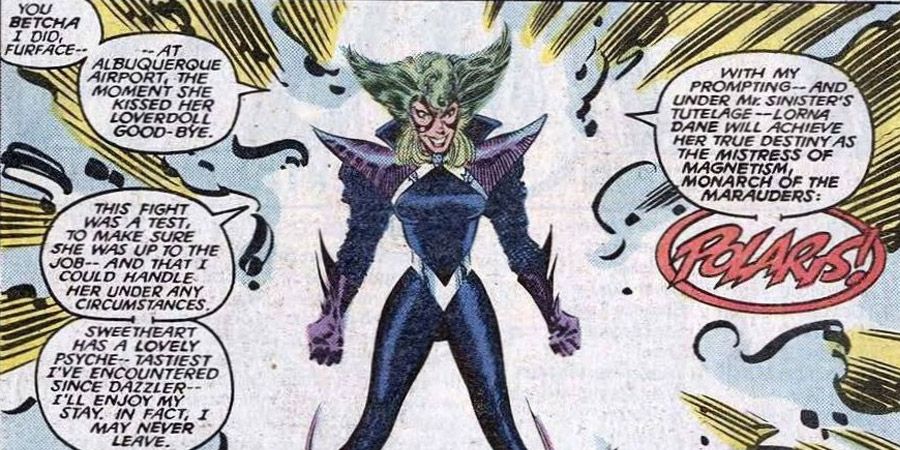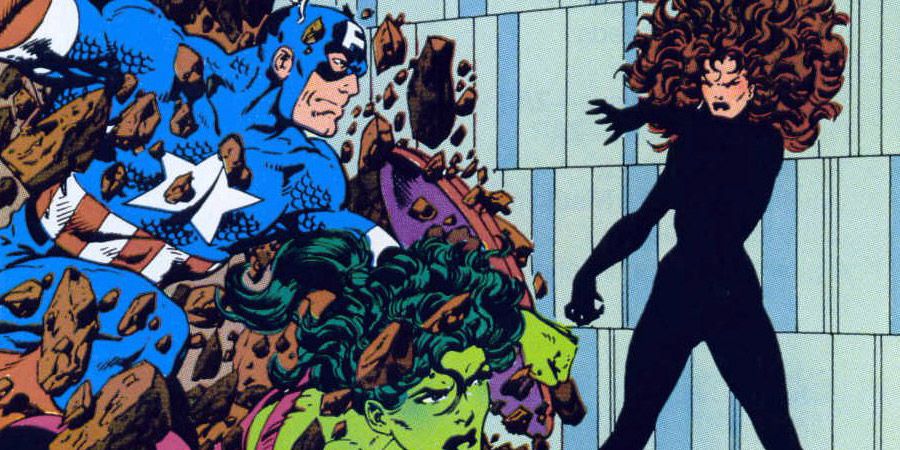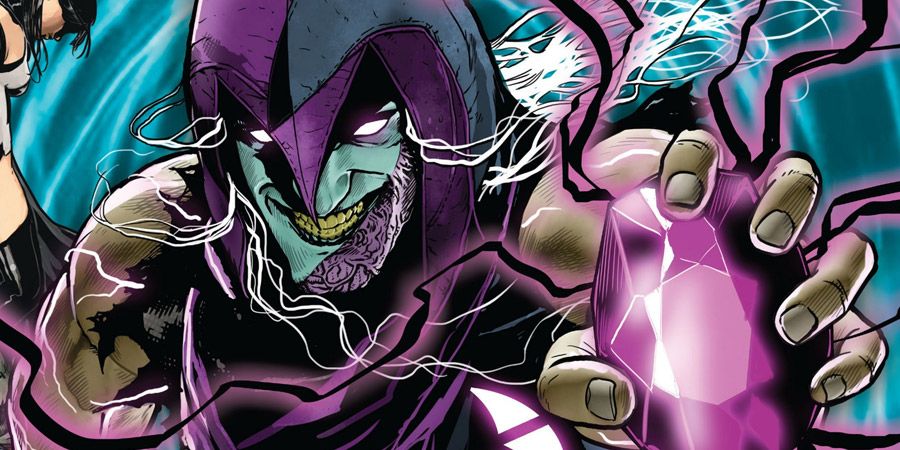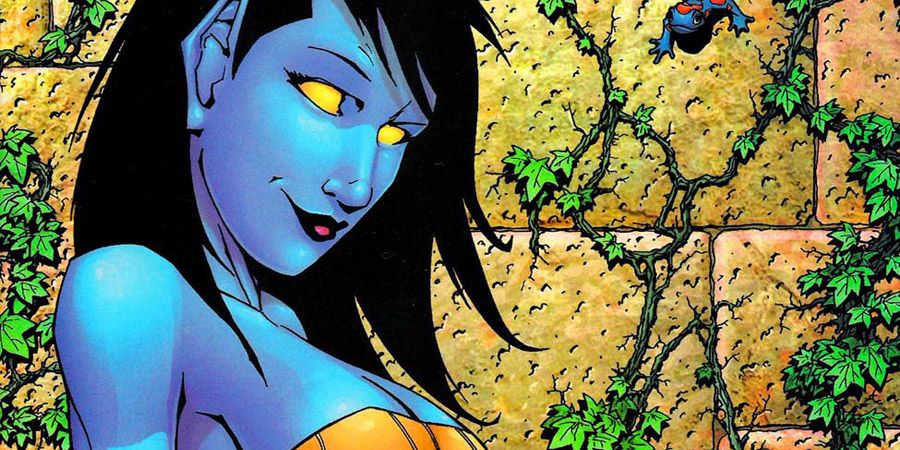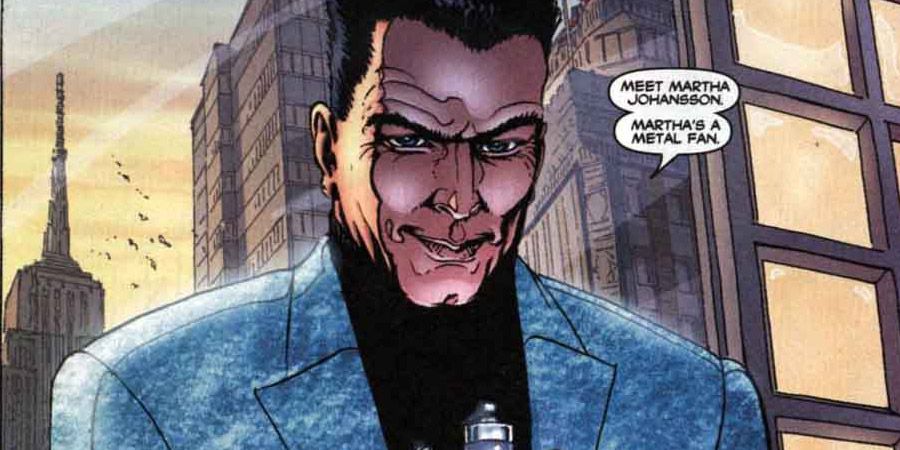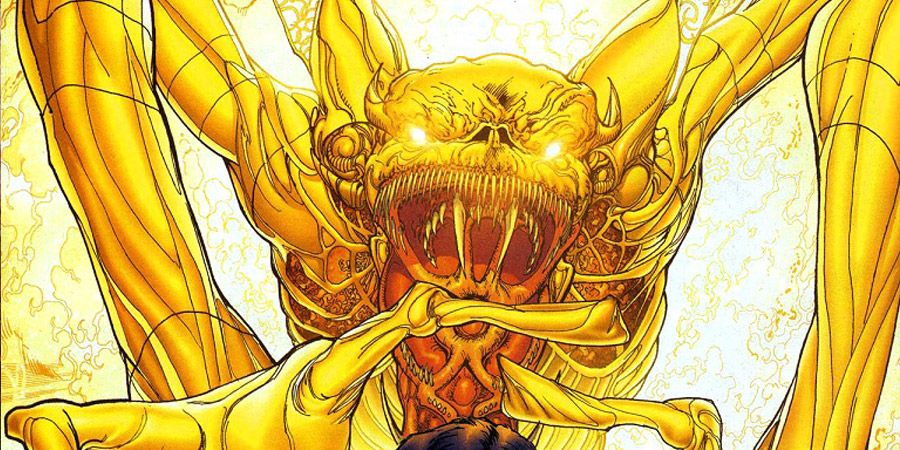Marvel Comics' brand-new hero, Mosaic, will begin his own ongoing series this October. Written by Geoffrey Thorne and drawn by Khary Randolph, "Mosaic" stars a professional basketball player named Morris Sackett, who is a bit of a jerk. When his Inhuman powers kick in, however, he loses his corporeal body and instead becomes a formless entity that must take over other people's bodies to survive.
RELATED: Marvel Announces "Mosaic," Starring Diverse, Body-Jumping Antihero
Thorne describes Mosaic's powers thusly: "The baseline is Morris can take over a person's body and essentially become them. He has access to every memory, every talent, and most important, every nuance of speech and behavior his host might have. There are no barriers when Morris takes a host. He is you. Not even a telepath could detect his presence unless he wanted them to. He cannot be detected or blocked by any conventional surveillance or defensive equipment, not even Stark-level tech. He is the perfect spy. He doesn't exist on the 'astral plane.' Morris physically takes over your body -- sort of like a parasite or a virus made of energy. There are some other powers, one in particular, that I'm holding back, and limitations and drawbacks, which he and we will learn."
Of course, "body jumping" has been a popular ability throughout comic book history. So, with the latest Inhuman set to leap into comic shops soon, we thought it would be fun to spotlight the twelve most notable heroes and villains who made a similar leap before him.
12 Deadman
The most famous example is clearly Deadman, created by Arnold Drake and Carmine Infantino for 1967's "Strange Adventures" #205. Boston Brand was a circus acrobat who was killed during a performance while wearing his makeup and costume, which he retained as his superhero look. He was then given the ability to possess any living person by the Hindu god Ruma Kushna, so that he could solve his own murder. Legendary comic book artist Neal Adams took over the feature very early on, and he, along with writer Jack Miller, created one of the most acclaimed ongoing features in comics at the time.
Even though Deadman ultimately solved his own murder, Brand was not allowed to enter Heaven. He has continued on possessing people to this day, trying to do some good while he can, hoping that one day he'll have done enough good works that he will be allowed to pass on to the afterlife.
11 Shadow King
The Shadow King debuted in 1978's "X-Men" #117 by Chris Claremont, John Byrne and Terry Austin, though the Shadow King name actually did not debut until nearly 150 issues later. Charles Xavier met evil mutant Amahl Farouk in Egypt early in Xavier's life, and Farouk challenged Xavier to a battle on the astral plane. Xavier won, and Faoruk apparently died.
This encounter compelled Xavier to put the X-Men together, as Xavier quickly realized there were evil mutants that needed to be stopped. Later, it was revealed that Farouk had been compelled to attack Prof. X by the multiversal malevolent psychic entity known as the Shadow King. The Shadow King feeds off telepaths, but he can possess other people, too, and had done so many times over the years in the pursuit of his evil goals.
10 Captain Universe
"Captain Universe -- the hero that could be you!" was the slogan Marvel used for the debut of Captain Universe, the name given to any being who finds themself possessed by the Uni-Power. The Uni-Power is a vague, incredibly powerful energy released from the extradimensional Enigma Force in times of turmoil. It possesses someone and gives them superhuman strength, speed, stamina, energy blasts and the ability to fly while garbing them in some sort of variation of the Captain Universe costume. The possessed person maintains their original personality, though it is just somewhat augmented by the Uni-Power, and, as part of the process, they are more willing to comply with the directive to do good.
The concept was introduced by Bill Mantlo and Michael Golden in 1979 in the pages of "Microanuts" #8, where readers met astronaut Ray Coffin, the first known human to become Captain Universe. His son took over the role in a "Marvel Spotlight" feature by Mantlo and artist Steve Ditko, before passing it on to a new host in each succeeding issue. Over the years, the Uni-Power has made its way through the Marvel Universe, though it disappears for years at a time, with the most famous example likely being when it possessed Spider-Man during the "Acts of Vengeance" crossover in 1989. In 2005, Marvel released a series of one-shots where the Uni-Power possessed four different heroes: Invisible Woman, X-23, Silver Surfer and Daredevil.
9 Proteus
The son of Moira MacTaggert and her sinister husband, Joseph, Kevin MacTaggert grew up on Muir Isle alongside his researcher mother. When Kevin's mutant powers kicked in, though, his uncontrollable thirst for energy made him a danger to everyone around him, so Moira was forced to enclose her own son in a special status room where he would be nourished and contained by special ionic energy. Moira hid the truth about her son from everyone, labeling the room as containing "Mutant X." During an attack on Muir Isle by Magneto, however, Mutant X escaped from his cell.
Upon his release, Mutant X discovered the bodies he possessed could not contain his powerful energy, so he would burn right through them. He soon took the name Proteus, after the ever-changing Greek god. Proteus could actually alter reality, that is how powerful he was. However, he had a weakness to metal. Thus, after he killed even more people, and with no other option available, Colossus of the X-Men turned into his metal form and killed Proteus.
The character returned recently during the "Necrosha" storyline which saw a number of mutants brought back to life. His energy form was dispersed by Magneto in the event, but it is likely only a matter of time before he eventually reconstitutes himself once more.
8 Spirit King
1979 was quite a busy year for characters who possess people, as the Spirit King joined Captain Universe and Proteus with his debut in in "Justice League of America" #171 (by Gerry Conway, Dick Dillin and Frank McLaughlin). He was introduced as an old villainous nemesis of Terry Sloane, the Justice Society of America member known as Mister Terrific. During the annual team-up between the Justice Society and the Justice League, the Spirit King possessed the body of Jay Garrick, the Flash. He then murdered Mister Terrific in the hope of turning the heroes against each other (on top of, you know, getting to kill his old nemesis, which surely held some appeal to the villain). The heroes successfully figured out the truth, but Spirit King escaped. The heroes were down, but Superman explained to them that they had won, because they had avoided turning on each other. While Superman was right, the guy who had just killed one of their teammates managed to avoid justice, highlighting what a different era it was in comic book storytelling. Eventually, years later, the Justice Society avenged their fallen teammate.
7 Jericho
The son of Slade Wilson, also known as Deathstroke the Terminator, Joseph Wilson (created by George Perez and Marv Wolfman) suffered a terrible throat injury when he was taken hostage by an enemy of his father. Slade was a touch slow in saving his son, and Joey suffered for it, losing the ability to speak during his rescue. However, due to the experiment that turned Slade into Deathstroke, Jericho was born a mutant with the ability to possess people and take control of their bodies. Jericho was a fine fighter outside of his powers, although he tried to be as much of a pacifist as he could.
When his father captured the Teen Titans in the 1984 "New Teen Titans" storyline "Judas Contract" (soon to be released as an animated DCU movie), Joseph and his mother helped the only Titan left standing, Dick Grayson, to help free his teammates, with Jericho joining the team soon after.
Sadly, Jericho was himself possessed by the souls of the villainous Azareth, which drove the young hero insane and led him to capturing his fellow Titans. At Joseph's request, his own father had to kill him to stop him, as he hated what the demon was doing in his body. Jericho has since been resurrected a number of times, but his brain has been so unstable that he has alternated between being a hero and a villain since he returned (and died and returned and died and returned... you get the picture).
6 Malice
An incorporeal and particularly vicious being, Malice was a member of Mister Sinister's Marauders as introduced debuted in "Uncanny X-Men" #210 by Chris Claremont, John Romita Jr. and Dan Green. She would wreak havoc by possessing one body after another. However, in "Uncanny X-Men" #219, she possessed the former X-Man known as Polaris and, for some reason, their energies connected in such a way that she was stuck in Polaris' body. The new joint being became the field leader of the Marauders, and after Mister Sinister was seemingly killed during "Inferno," Malice's hold over Polaris somehow failed. She returned during Polaris' time as a member of X-Factor to try to torment Polaris some more, but was defeated and seemingly destroyed.
Malice showed up a number of years later as a digital entity, taking possession of the X-Man Karima Shapandar, the Omega Sentinel. Malice possessed Karima for a while before being driven from her body. After being captured by the Superior Spider-Man (during the time that Otto Octavius was in charge of Spider-Man's body -- a body-jumper in and of himself, I suppose) and turned over to Cyclops, Malice's whereabouts are unknown.
5 That Which Endures
This one is a bit tricky, since the idea behind That Which Endures (which debuted in John Byrne's "Avengers West Coast" #47 in 1989) is that it exists in everybody. Billions of years ago, when the first cell split occurred on Earth, leading to multicellular lifeforms, That Which Endures attached itself to the resulting organism and has sort of hitched a ride ever since. Roughly every hundred thousand years, That Which Endures awakens a hundred or so randomly selected beings, and has them take stock of the situation on Earth to determine whether That Which Endures needs to leap to a new species.
Originally, That Which Endures latched on to dinosaurs, but when it made the leap to homo sapiens, it stuck. In the storyline it debuted in, the plan was to move on to mutantdom, starting with the Scarlet Witch, who was in a bad state after her husband, the android known as the Vision, was dismantled and put back together, sans his original personality and emotions. The Avengers stopped the plan to move That Which Endures into mutants, and the people it was controlling regained their faculties. The entitiy/collective consiousness' current status is unknown.
4 Eclipso
Eclipso made his comic book debut in 1963's "House of Secrets" #63 by Bob Haney and Lee Elias. At the time, he was just the eclipse-driven evil side of archaeologist Bruce Gordon, a strict "Jekyll and Hyde" scenario. Nearly thirty years later, Keith Giffen and Robert Loren Fleming revamped the character for DC's 1992 summer crossover, "Eclipso: The Darkness Within," revealing his true identity as an ancient god of vengeance whose spirit had been trapped in a gigantic black diamond. The diamond was eventually cut into many smaller diamonds, one of which found its way to Bruce Gordon, and that was what led to Eclipso being able to possess Gordon -- not a direct connection between Gordon and Eclipso, but the gem.
During the "Darkness Within" crossover, Eclipso spread his influence across the globe by possessing other powerful beings who were in possession of the fragmented gem, including Superman himself! There was an excellent "Adventures of Superman" annual that shows the various heroes of Earth teaming up to stop the Eclipso-possessed Superman, and eventually, in the "Eclipso" ongoing series that followed the crossover, the Spectre ended things once and for all by reforming the giant black diamond and trapping Eclipso within it.
3 Nocturne
Artist Jim Calafiore first came up with Nocturne in a one-off drawing depicting a future where Nightcrawler had taken control of Professor Xavier's school and was married to the Scarlet Witch. The pair had a daughter named Talia Wagner, also known as Nocturne.
She would have disappeared from Marvel Comics completely after that if it were not for Judd Winick and Mike McKone. The creators added her to the Exiles, a team made up of a heroes from different dimensions. Nocturne possessed a number of mutations, including her father's skin color and acrobatic skills, her mother's "hex bolts," and her own ability to possess people. She used these skills as the Exiles attempted to repair broken realities across Marvel's multiverse, and eventually fell in love with her teammate Thunderbird. The two heroes formed a strong  bond, but forces temporarily worked against them when Thunderbird was seemingly killed. Nocturne briefly made her way to the mainstream Marvel Universe where she served as a member of the short-lived New Excalibur team.
2 Sublime
Sublime was the name given a sentient bacteria that first appeared at the dawn of multicellular lifeforms (not unlike That Which Endures, to be honest), attaching itself like a parasite to a number of beings over the years. However, Sublime initially could not take over mutants, so it became obsessed with mutants and getting rid of them. It then created its most famous host, John Sublime, and developed the Weapon Plus Project with the intent of devising a way to destroy mutantkind.
Sublime came into conflict with the X-Men, beginning with Sublime's debut in "2001 New X-Men Annual" (by Grant Morrison and Leinil Francis Yu). Sublime was so twisted, he even weaponized the brain of a mutant named Martha. Sublime then developed a drug called Kick that would increase mutant powers. As it turned out, however, Kick was really just the Sublime bacteria in another form, allowing the enitity to finally take over mutant hosts. In Grant Morrison's last "New X-Men" story arc, Sublime is revealed to have taken possession of Beast in the future, making him a true force for evil.
1 Parallax
Like Eclipso before it, Parallax was believed to be one thing when it debuted, and revealed to be another later on. After Coast City was destroyed during "Reign of the Supermen," Hal Jordan seemingly went crazy, killing the Guardians of the Universe and destroying the Green Lantern Corps' central battery so that he could become Parallax, one of the most powerful beings in the universe -- powerful enough to change reality itself! That was, in fact, Parallax's plan during the "Zero Hour" crossover in 1994; he would restart time and fix anything that had gone wrong, like Coast City being destroyed.
Eventually, in 2004's "Green Lantern Rebirth" (by Geoff Johns, Ethan Van Sciver and Prentis Rollins), we learned that Parallax was actually a separate entity that had been trapped in the battery since the beginning of the Green Lantern Corps. IT's presence in the battery was, in fact, the cause of the rings' weakness against the color yellow. Parallax had somehow possessed Hal Jordan, and made him become a bad guy. Eventually driven from Jordan's body, Parallax has possessed other heroes in the years since, including Kyle Rayner, Flash and Batman.

